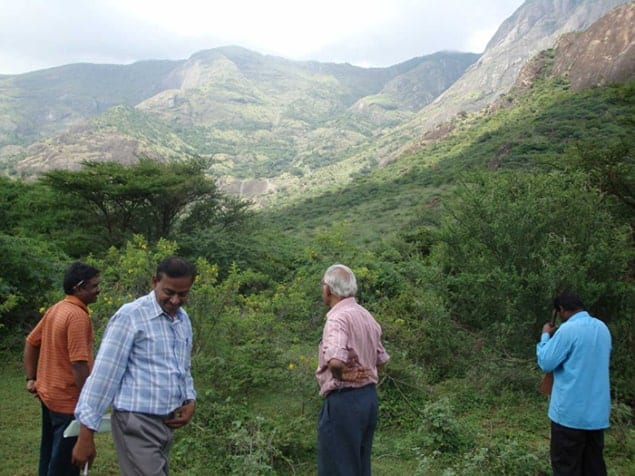
Just months after receiving the green light from the Indian government, the India-based Neutrino Observatory (INO) has been dealt a blow after a court writ was filed against the facility’s new site by local environmentalists and politicians. The writ, filed in a state court and the National Green Tribunal, alleges that the site is in a seismic and highly biodiverse area, and that tunnelling required for the project could affect nearby aquifers.
Originally scheduled to be complete in 2012, the INO finally received the go-ahead in January this year when it received Rs 15bn ($236m) towards construction inside a mountain near Pottipuram – 110 km from the temple town of Madurai in the southern state of Tamil Nadu. Pottipuram was selected after environmentalists protested in 2010 that the original choice – Singara village in Tamil Nadu – was near an elephant corridor. The INO is to be built some 1.3 km beneath the mountain peak, accessible via a 2 km-long tunnel. The lab will comprise three caverns – the largest, being 132 m long, 26 m wide and 30 m high, will house the 50,000 tonne Iron Calorimeter neutrino detector.
Physicists in India say that the absence of such a facility deprives them of hands-on experience in experimental particle physics – a continuing weak point for the community. Scientists are now dismayed by the new writ, which is being heard at the Madurai bench of the High Court. “The site is a wasteland, a barren land,” says INO project director Naba Mondal of the Tata Institute of Fundamental Research in Mumbai. “We were not going to occupy a forest land or one with good vegetation.” That view is backed by a 2011 report from the ministry of environment and forests, which states that the forest clearance would be “notional” as “no forest land is expected to be occupied, since both the tunnels and laboratories are underground”.
“Unnecessary panic”
Mondal adds that the writ is taking valuable energy and time away from getting the project going. “Such petitions create a kind of question mark in the minds of people who do not understand physics, an unnecessary panic that is not warranted,” he says.
Thiagarajan Jayaraman of the Tata Institute of Social Sciences Mumbai disputes the claims in the petition, saying that the tunnelling zone for the observatory is a “charnockite” zone – one that contains feldspar and quartz rocks – with no groundwater. Indeed, a study carried out by the Geological Survey of India (GSI) last year concluded that there was no abnormal threat of groundwater getting into the access tunnel as well as the cavern area. This, combined with the fact that no habitation or water wells exist in the proposed site, suggests, according to the GSI, that there is little danger of the groundwater regime being disturbed by the proposed tunnelling.
However, V T Padmanabhan, chairman of the Society of Science Environment and Ethics – a non-governmental organization – based in Thrissur, Kerala, told physicsworld.com that the project is close to the border with Kerala, which is rich in biodiversity and groundwater sources.



